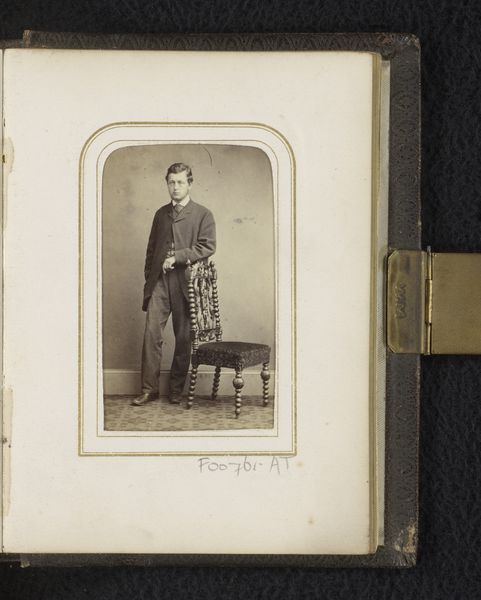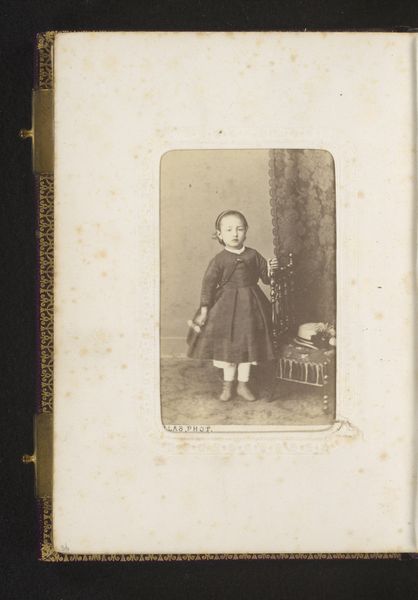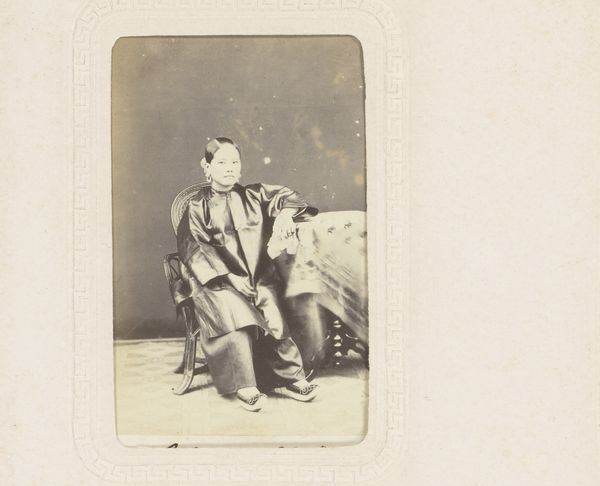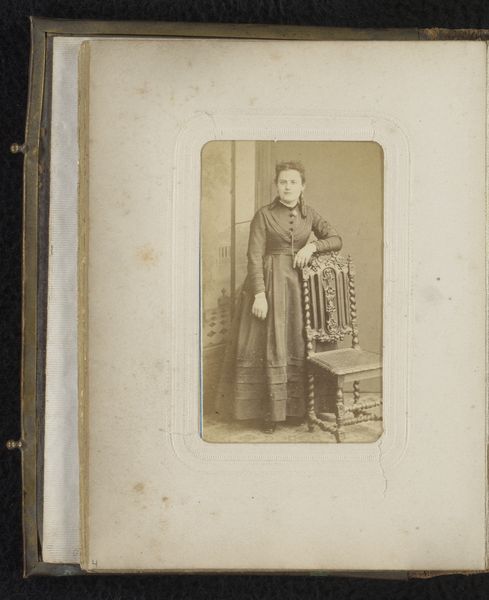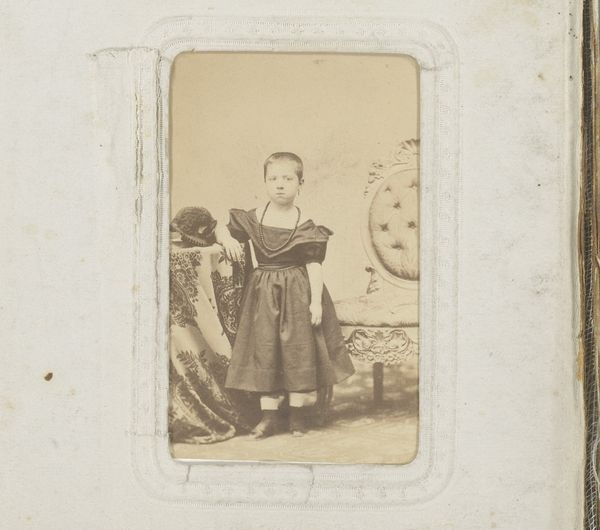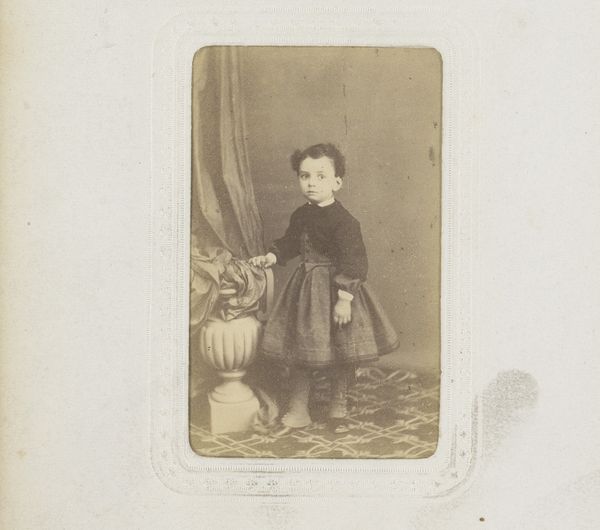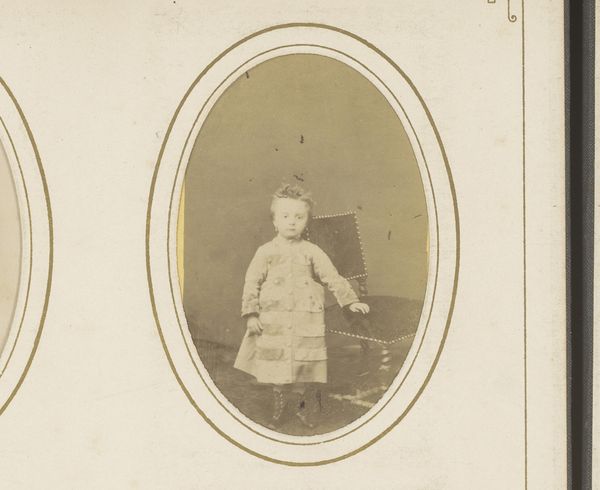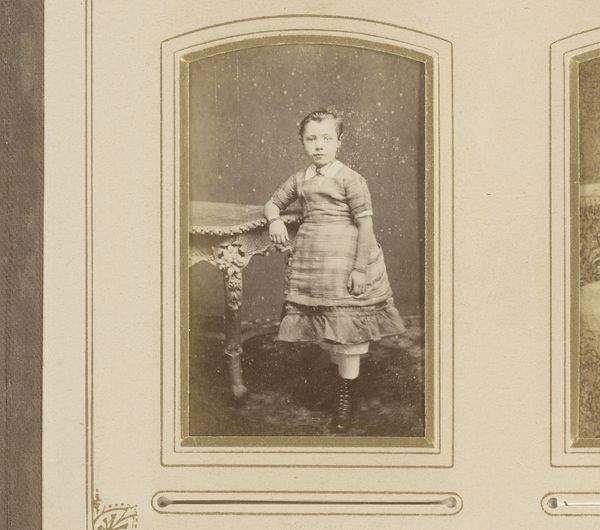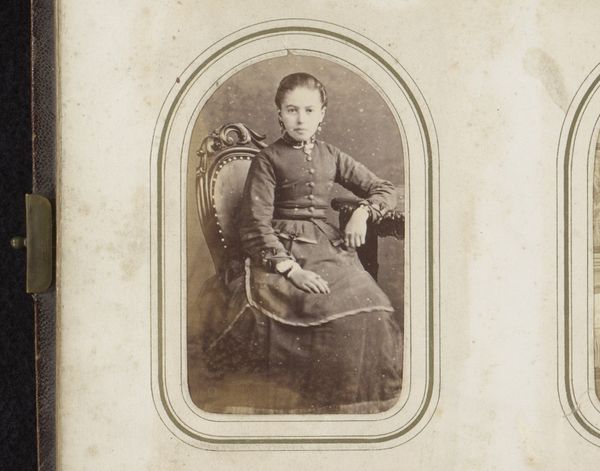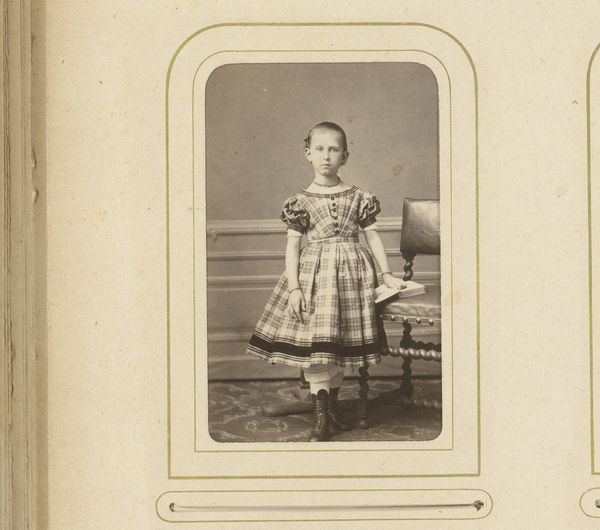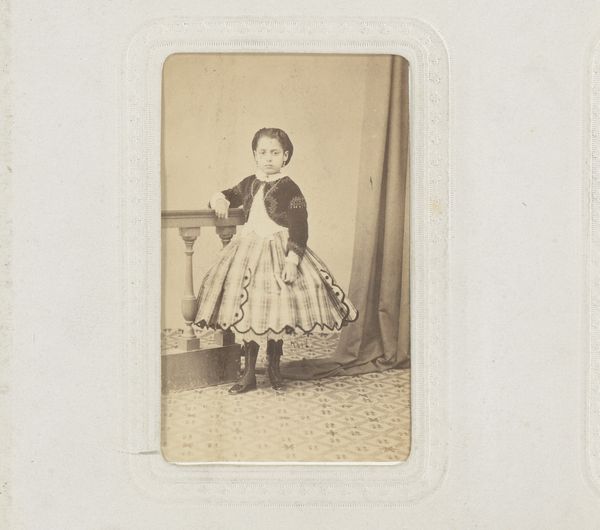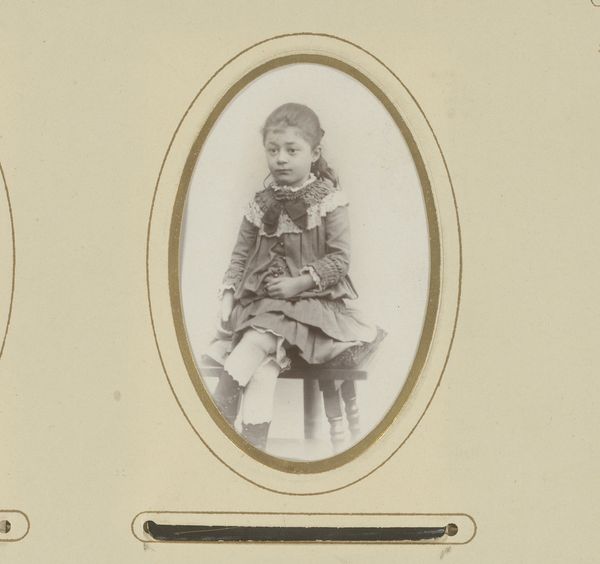
photography, albumen-print
#
portrait
#
photography
#
watercolor
#
albumen-print
#
realism
Dimensions: height 83 mm, width 51 mm
Copyright: Rijks Museum: Open Domain
Curator: This albumen print, created sometime between 1860 and 1899 by Philipp Hoff, is titled "Portrait of a Girl Standing by a Chair." Editor: My first thought is the almost palpable sense of restrained unease emanating from this portrait. The muted tones amplify a somewhat mournful air. Curator: Right, that's partly the effect of the albumen printing process; but consider, too, the girl's clothing, the materiality of the woven fabrics that speak to the economics of the time, a working-class reality perhaps, given the utilitarian nature of her dress and apron. Editor: I'm drawn more to the formal construction; notice how the curve of the arch frames the subject, drawing the eye immediately to her face. The symmetry is carefully balanced, but the slightly off-center pose, leaning on the chair, subtly disrupts what might have been too static. Curator: That chair is a stage prop. Hoff and his peers used the same backdrops and objects over and over again in their studios, a system that demonstrates how photography became industrialized, moving from bespoke artistry to commercial endeavor, shaping representations of identity. Editor: Even with mass production techniques, consider the exquisite tonal gradations achieved in the photographic process, the light playing on the girl's face, the delicate detail of the patterned fabric. The textures speak volumes. Curator: And the social expectations it implies! Standing rigid. This wasn’t a casual snapshot, remember, but a carefully constructed performance involving specific postures and attitudes, representative of class, station, and gender norms that dictated even leisure time! Editor: You make a good point about the constraints on her demeanor, but it’s also possible to see defiance in the set of her mouth, or determination in her gaze, subtle emotional modulations registered thanks to the photographer's adept handling of composition and light. Curator: Considering the print’s format in a photo album, it gives insights to how it circulated in family archives, used as records for births, deaths, or status during a period when families moved across geographical distances to earn livelihoods. Editor: Reflecting on the portrait's careful composition alongside the textures achieved in this albumen print gives me a deeper understanding of its emotional complexity. Curator: Indeed, understanding the industrial techniques offers a different viewpoint for considering the artist's commercial motivations while also interpreting it from its role in popular, material, family culture of the period.
Comments
No comments
Be the first to comment and join the conversation on the ultimate creative platform.

